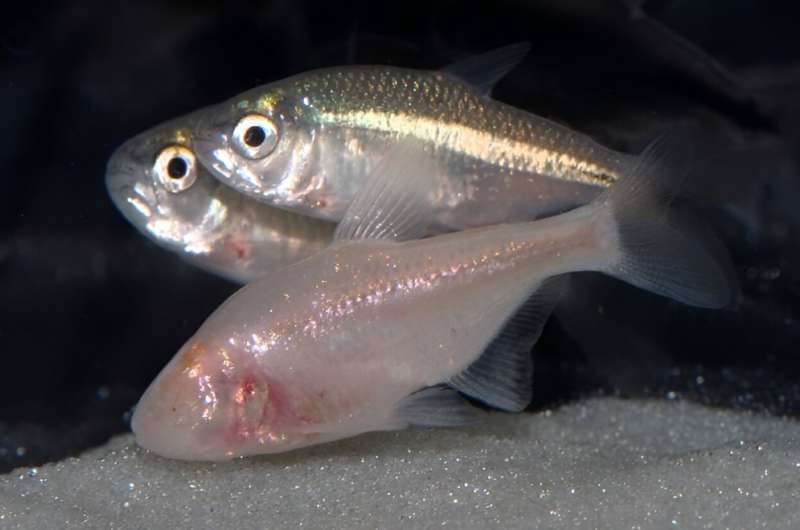This article has been reviewed according to Science X's editorial process and policies. Editors have highlighted the following attributes while ensuring the content's credibility:
fact-checked
trusted source
proofread
Overeating and starving both damage the liver: Cavefish provide new insight into fatty liver disease

Fatty liver, which can lead to liver damage and disease, can occur from both overeating and starvation. Now, new research shows how naturally starvation-resistant cavefish, unlike other animals, are able to protect their liver and remain healthy. The findings have implications for understanding and potentially addressing liver conditions in humans.
Researchers from the Stowers Institute for Medical Research, in collaboration with Université Libre de Bruxelles in Belgium and Iowa State University, compared cavefish to other animals more susceptible to starvation and identified a gene responsible for the development of the starvation-induced fatty liver.
The study, published in Life Science Alliance, led by co-first authors Ansa Cobham, Ph.D., in the lab of Associate Investigator Nicolas Rohner, Ph.D., and Macarena Pozo-Morales, Ph.D., in the lab of Assistant Professor Sumeet Pal Singh, Ph.D., also showed that this evolutionarily conserved gene could be targeted by an existing drug candidate to protect against liver damage.
"This same approach can be applied to what we see in overconsumption," Rohner said. "In Western societies where, often, too many calories and not enough exercise is a problem, this new understanding may lead to prevention or potential treatment of fatty liver disease."
"We have discovered for the first time an organism—cavefish—that can avoid fatty liver under starvation conditions," said Cobham. "Fatty liver can result in complications like liver cirrhosis and liver failure. This study helps us understand more about the biology underlying these diseases in humans."
Cavefish are cousins of the Mexican tetra river fish that flooded into underground caves over 100,000 years ago. The researchers show that in the absence of food, cavefish at early developmental stages not only survive much longer than their river fish counterparts but also do not accumulate liver fat.
"This was the first time we clearly showed that the mechanism for this resistance is accomplished by not accumulating excess fat in the liver," said Rohner.
The accumulation of fat in liver cells leads to organ damage and atrophy or wasting away. The researchers compared gene expression levels between cavefish, river fish, zebrafish, and even fruit flies, identifying a gene that is activated during prolonged periods of starvation in all but cavefish.
"Expression levels of this gene are reduced in cavefish, which is a good indicator that if we are able to target this gene in humans, we may be able to treat or manage human metabolic diseases such as type 2 diabetes and obesity," said Cobham.
The team's findings indicate that the starvation-induced gene not only regulates fatty liver disease, but its mechanism has also been conserved from fruit flies to fish to humans, or approximately 400 million years of animal evolution.
Inhibiting this gene's protein in zebrafish and river fish larvae and deleting the gene in fruit flies resulted in less liver fat and larger livers, indicating this protects the liver from damage and atrophy.
"The collaboration between Dr. Sumeet Singh's team in Belgium, our team at Stowers, and scientists from Iowa State University combined our collective expertise in zebrafish, cavefish, and fruit flies to uncover the mechanism for starvation-induced fatty liver," said Rohner.
More information: Macarena Pozo-Morales et al, Starvation-resistant cavefish reveal conserved mechanisms of starvation-induced hepatic lipotoxicity, Life Science Alliance (2024). DOI: 10.26508/lsa.202302458





















